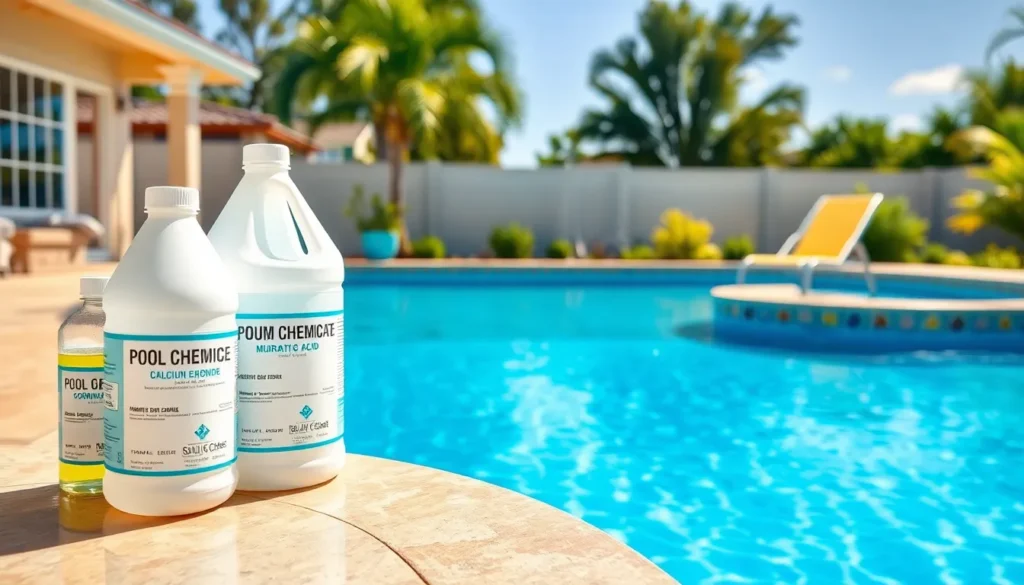Table of Contents
TogglePicture this: you’ve nurtured your house plants like they’re your own children, only to discover a swarm of tiny flying bugs buzzing around. Yep, those pesky gnats have decided to throw a party on your beloved greenery. While they might look harmless, these uninvited guests can wreak havoc on your plants and your peace of mind.
But fear not! With a little knowledge and some clever strategies, you can reclaim your indoor oasis and send those gnats packing. Whether you’re a seasoned plant parent or a newbie, understanding the enemy is the first step in this battle. Let’s dive into the world of gnats and uncover how to keep your plants thriving and your home gnat-free. After all, who wants to share their home with a bunch of freeloading bugs?
Understanding Gnats on House Plants
Gnats pose a significant challenge for house plant owners. Identifying their characteristics and understanding their types helps in managing infestations effectively.
What Are Gnats?
Gnats are small flying insects belonging to several families. Common varieties include fungus gnats and fruit gnats. Fungus gnats thrive in moist soil, where they lay eggs, leading to larvae that can damage root systems. Fruit gnats are attracted to decaying fruits and vegetables but can also affect plants. Identifying these pests based on their characteristics aids in implementing targeted control measures.
Types of Gnats Affecting House Plants
House plants commonly attract two gnat types: fungus gnats and shore flies. Fungus gnats feature long legs and slender bodies, thriving in damp potting soil. Shore flies resemble fruit flies but prefer moist environments around plant bases. Both types can harm plants, stunt growth, and create unsightly infestations. Understanding the distinctions between these pests allows for more effective treatment strategies.
Signs of Infestation

Recognizing gnat infestations early can prevent severe damage to house plants. Several key indicators signal an issue.
Identifying Gnats in Your Plants
Look for small, flying insects near the soil or foliage. Adult fungus gnats often appear as tiny black flies buzzing around your plants. These pests tend to congregate near damp areas, especially overwatered pots. Noticing an increase in these flies indicates a developing problem. Additionally, inspect the soil for eggs or larvae. Signs include white, wriggling larvae residing just below the surface. Catching these signs early is crucial for effective management.
Common Symptoms of Gnat Damage
Plants can exhibit several symptoms when infested with gnats. Yellowing leaves often indicate stress from larvae feeding on roots. Wilting in otherwise healthy plants can also occur as roots become damaged. Other signs include stunted growth, which compromises overall plant health. Dropping leaves might happen as plants struggle to cope with infestations. Observing any of these symptoms necessitates immediate action to protect your plants.
Prevention Strategies
Implementing effective prevention strategies can significantly reduce the likelihood of gnat infestations in house plants.
Proper Watering Techniques
Proper watering techniques play a critical role in preventing gnats. Overwatering creates a favorable environment for fungus gnats, as they thrive in moist soil. Watering plants only when the top inch of soil feels dry minimizes excess moisture. Additionally, consider using a watering can with a narrow spout to avoid wetting the foliage and soil too much. During the growing season, adjust the frequency to meet the plant’s needs while promoting healthier root systems. Overall, maintaining an appropriate moisture level prevents gnat breeding.
Soil Management Tips
Soil management tips help keep gnats at bay. Choosing well-draining potting soil can minimize moisture retention, making it less attractive to gnats. Products containing perlite or sand enhance drainage and airflow, reducing damp environments. Regularly aerating the soil improves drainage and prevents compacting, which can trap moisture. Moreover, avoid using organic materials like mulch, as they can provide breeding grounds. Taking these steps ensures a healthier growing environment for indoor plants.
Choosing the Right Plant Pots
Choosing the right plant pots is essential for gnat prevention. Opt for pots with drainage holes to allow excess water to escape, preventing standing water. Selecting pots made from breathable materials, like terracotta, creates airflow and reduces moisture retention. Ensure that pot size aligns with the plant’s needs, as overly large pots hold more soil, increasing the risk of overwatering. Additionally, using a bottom saucer can catch excess water while minimizing gnat access. These considerations lead to healthier plants and fewer gnat issues.
Treatment Options
Multiple strategies exist for addressing gnat infestations on house plants. Proper treatment ensures effective management and keeps plants healthy.
Natural Remedies for Gnats
Beneficial nematodes serve as a natural solution. These microscopic organisms attack gnat larvae in the soil. Another option involves using yellow sticky traps that attract adult gnats, effectively reducing their population. Additionally, a mixture of water and dish soap can create a mild pesticide. Spraying this solution on affected foliage and soil can deter gnats. Organic solutions like diluted apple cider vinegar, placed in a bowl near plants, also lure adult flies without harming the plants. Regularly using these remedies can minimize gnat issues organically.
Chemical Solutions and Insecticides
For quicker results, chemical insecticides can target gnats effectively. Products containing pyrethrins or neem oil work well as broad-spectrum insecticides. Applying these solutions directly to the soil and affected plants targets both adult gnats and larvae. Follow manufacturer guidelines to ensure safe usage. Granular insecticides are also available for soil application, providing long-lasting protection against pests. Be sure to integrate chemical solutions with preventive measures for more sustainable results. Regular monitoring ensures that treatment remains effective.
Dealing with gnats on house plants can be a daunting challenge but it’s manageable with the right approach. By understanding the types of gnats and their behaviors, plant owners can implement effective prevention and treatment strategies.
Maintaining proper watering practices and choosing the right soil and pots are essential steps in keeping these pests at bay. When infestations occur, utilizing natural remedies or targeted treatments can help restore plant health.
With vigilance and proactive care, anyone can enjoy a thriving indoor garden free from the nuisance of gnats. Healthy plants not only enhance the home environment but also provide a sense of accomplishment for plant enthusiasts.




